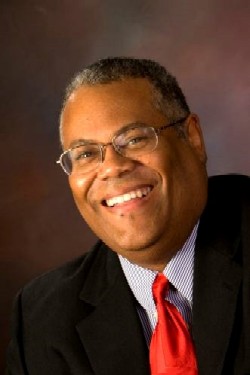Not All Bread Toasts The Same
Posted by Mitch Mitchell on Jan 31, 2011
Like most people I have a toaster of some kind. Mine is a toaster oven; I think we have a real toaster as well, but if so I haven't seen it in years.
 |
Whenever I want toast, I put it on a certain setting so that it'll end up being just the way I like it. I want to know it's toast, which means it has to have a nice, golden brown color. I don't want it too dark or too light; I know just where I want it to be.
Then one day I bought some english muffins, put them in the toaster, and went about my business. When the bell rang I went to the toaster and... nothing. It looked like nothing had happened to them. I thought maybe the toaster was broken so I did it again; that's what guys do.
When the bell rang again I went to check. At least something had happened, but not much. It was barely singed. This time I put it on high and did it one more time, but I was watching. When it got to the point where I saw it was how I liked them, then I pulled it out.
It turns out that not all bread toasts the same. I don't know what's in english muffins to have them toast differently but it seems to be the same case with bagels. You have to put it on the highest toaster setting, then run it through a couple of times to get what you want.
I kind of like to relate it to how we deal with individuals. Every individual we meet has their own history and background. Unless they give us details we never quite know how they came to be who they are. Thus, we're never quite sure how to interact with them. When we're in a leadership position, we often expect them to just fall in line with our way of thinking, to be able to learn something the way we did; how often has that worked for you?
Like toast, leaders have to learn just what motivates each individual person they work with. They also have to determine the speed and format that each individual can learn at, then determine if they can live with it. For instance, the military has a way of finding out who's tough enough to go to the next stage very early on. They have to do that. Some offices need a person to learn everything they have within a couple of weeks. Other offices realize that what they need someone to learn is a 6-month process.
The same goes with learning speed. If a person only has to sit at a machine and look at a monitor, there's no learning curve there. If a person has to use a complicated computer program suddenly the learning curve depends on a lot of factors: how often has this person been on a computer; what types of things has this person done on a computer; does this person have any background in the initial subject they'll be dealing with; does this person have any problems with learning in general, such as dyslexia; etc. There is no one size fits all most of the time.
The best leaders learn this early on and know what they can and can't do with others. The worst... well, let's just say they end up being dissatisfied more often with their toast than the rest of us.


Great comparison Mitch. I’m just happy if I don’t set off the smoke alarms. Either at home or in society.
I’m with you Allan, and of course it’s happened enough time during experimentation.
In business we strive to categorize people as much as we can. It’s more efficient when you sell stuff to people to imagine them acting like sheeps, divided into macro-categories, and it’s more efficient to treat employees like that as well. For the most part this can be true, but when you deal with individuals, it can turn into a huge mess. You think someone would behave like the rest of the sheeps, but he doesn’t. And problems arise.
It’s very important to understand every person is different when you actually have to deal with them 1 by 1.
Thanks for your thoughts Gabriele, and indeed people are different and we have to be fair when we’re acknowledging that.
Well, how about that? I always knew there was a reason we tell people, “You’re toast!”
I worked with quite a few bagels in my day, so I can relate to your lesson here. In my situation, not only did I have to deal with all the different breads, I also had to keep my supervisors from telling me how to set my toaster. They always complained that my toaster was taking too long to produce results.
They shut up when the toast began to come out consistently delicious.
Cheers,
Mitch
Great contribution, Mitch. Yup, when toast is just the way you like it, there are few happier feelings produced. It’s kind of a silly analogy, but it just seems to work so well also.
It’s amazing what we can learn by one of the most simple things we eat. Is this why there are so many kinds of breads at business conference breakfasts? Gee, it all makes sense now 😉
It could be, Sam; course I have to admit that I don’t eat any of that stuff at conferences. lol
I love how you find metaphors that compare life and business.
Very good points about tailoring ones leadership style depending on the individual. I have been in situations where I have seen leaders use the same, old style of leadership and they didn’t get the results that they could have.
Thanks Keith. People do have to be willing to change up when things aren’t working, but hopefully they’ll be in the process of always being ready to change even before they have to.